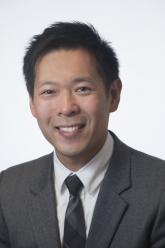Opinion

Converging to build for tomorrow
- Author:
- Jerome C. Siy, MD, MHA, SFHM
Publish date: June 16, 2021
This moment in history demands synergy, cooperation, and creativity.
Opinion

In a time of two pandemics, a recommitment to work together
- Author:
- Jerome C. Siy, MD, MHA, SFHM
Publish date: September 14, 2020
While we physically mask to prevent the spread of COVID-19, we must make efforts to unmask the failings of our health system.
